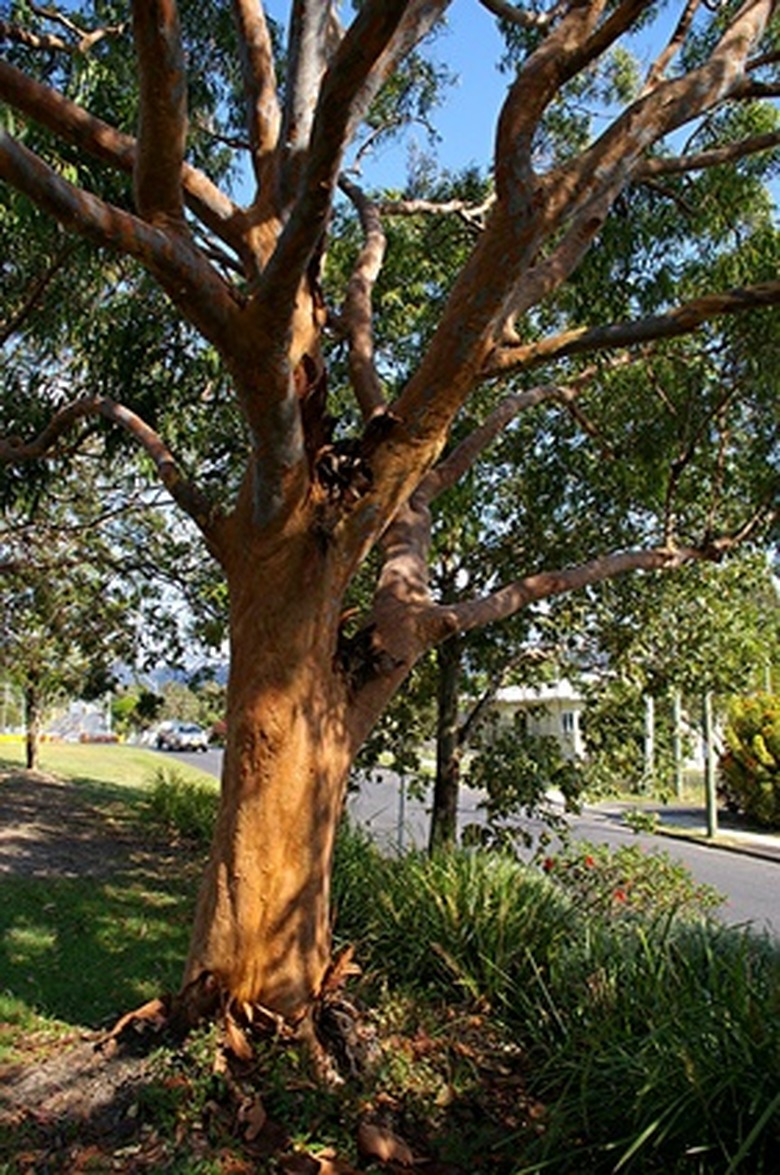Diseases Of A Sweet Gum Tree
Diseases of a sweet gum tree (Liquidambar styraciflua) come in many forms, with the majority as fungal infections. Depending on the disease, a sweet gum tree may be affected on a cosmetic level or may be in danger of death. Understanding different diseases, their symptoms, and how to prevent and manage them will provide a bit of peace of mind. Also, many sweet gum tree diseases only occur on weakened or wounded trees; practice appropriate maintenance.
Cercospora
Cercospora is the most common of the many diseases of a sweet gum tree, according to the Florida Department of Agriculture and Consumer Services. Cercospora is a fungal spot disease that produces dark brown, bordered, angular to circular spots 2 to 10 mm in diameter on both sides of leaves. Cercospora may cause leaf drop and diminished vigor but does not pose a great threat to sweet gum trees. To control this disease, remove and destroy all infected fallen leaves, and apply a systemic fungicide called benomyl immediately once symptoms are visible.
- Diseases of a sweet gum tree (Liquidambar styraciflua) come in many forms, with the majority as fungal infections.
Artist's Conk
Artist's conk (Ganoderma applanatum) is a fungal disease of a sweet gum tree that causes wood rot, according to the University of California IPM Online. Artist's conk infects trees by entering through wounds. White rot occurs in roots and trunks. The fungus displays semicircular conks (mushroom-like growths) that measure 2 to 30 inches wide and 1 to 8 inches thick with a brown-hued upper surface and white beneath. Though conks appear near the base of the tree, decayed wood may spread up to 15 feet above and below the conk. This type of fungal infection causes severe limb and trunk decay, sometimes with the more significant damage hidden within the tree. Decay may lead to a falling hazard. Control of artist's conk is challenging; Keep the tree vigorous and protect it from injury. Remove visibly diseased limbs by pruning "just outside the branch bark ridge and branch collar," as recommended by the University of California IPM Online. Fungicides are not recommended.
- Artist's conk (Ganoderma applanatum) is a fungal disease of a sweet gum tree that causes wood rot, according to the University of California IPM Online.
- This type of fungal infection causes severe limb and trunk decay, sometimes with the more significant damage hidden within the tree.
Botryosphaeria Canker
Botryosphaeria canker (Botryosphaeria dothidea) is a fungal disease of sweet gum trees. Generally attacking weakened or wounded sweet gum trees, botryosphaeria kills bark and displays areas of dead tissue referred to as "cankers." Several cankers form on the bark of sweet gum trees resulting in lesions that may become sunken with roughened bark that peels from the tree. Botryosphaeria canker may cause branch dieback, cosmetic damage and even the death of the tree. Keep your tree vigorous, as healthy trees are resistant to canker disease. Branches with cankers should be pruned while the weather is dry. Prune branches back 6 to 8 inches below the infected bark. Remove and destroy any fallen leaves or branches. Fungicides are not an effective treatment, but Rutgers University suggests contacting a local county extension office for professional assistance.
- Botryosphaeria canker (Botryosphaeria dothidea) is a fungal disease of sweet gum trees.
- Botryosphaeria canker may cause branch dieback, cosmetic damage and even the death of the tree.
